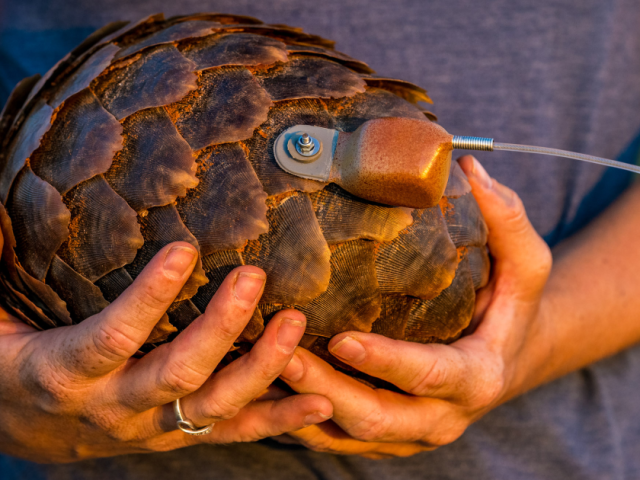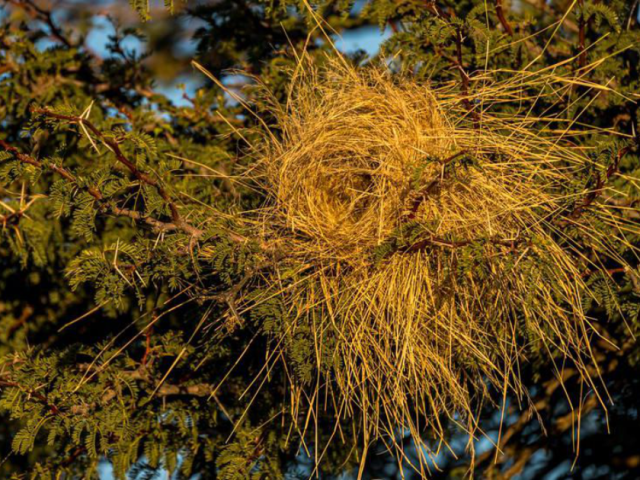OGRC funds researchers, including several young post-grad students who are in the process of making their mark. The Young Voices series gives short profiles of students and the work they are doing in the field.
Featured is Thato Mathoko who is using detectors to record small mammal vocalisations at Telperion Nature Reserve.
Thato Mathoko listens to the mice, rats, shrews and elephant shrews that scurry invisibly around the Telperion Nature Reserve. To do so he uses both audible and ultrasonic detectors to record small mammal vocalisations. This will help in identifying individuals in much the same way in which bats, birds and other vocalising animals can be identified through their diverse calls.
Mathoko is an MSc student attached to Unisa’s Applied Behavioural Ecology and Ecosystems Research Unit (ABEERU), and he is spending two years at Telperion doing this research.
“Basically, what we are trying to do,” says Mathoko, “is to develop a call library for the 19 species of terrestrial small mammals identified in this reserve during Dr Duncan’ MacFadyen’s (head of OGRC) PhD project. And we’ve to this date found another three species (Crocidira hirta, Myosorex varius and Dasymys incomtus) never recorded here before”.

Mathoko and fellow MSc student Georgia Muller have developed a protocol to make recordings of individual, wild-caught, terrestrial small mammals. But first they had to create a field bioacoustics laboratory near the ABEERU research centre on Telperion by converting an abandoned building. They had to seal the building from any creatures such as bats which would make calls that would interfere with those of their target species. Furthermore, they devised echoless chambers in the bioacoustics laboratory in which they could hold captive animals to make individual, species-specific recordings of the animals’ vocalisations.
Mathoko says “we go out in the mornings and set up the traps and check them three times a day to see if there are any animals inside. If we find small mammals in the traps, we take those traps to the acoustic lab and record them over 24 hours. With the idea being to get the audible and inaudible sounds those animals make”.
The objective is not just to record one single sound per animal, but the range of sounds it emits depending on circumstances, and from more than one individual. “We find that these animals have got calls and patterns that differ. You might get one individual, that makes one sound in the night. But we need as many calls as we can get. Sometimes we have to pair animals which even if they have no contact, will communicate, and then you get those calls. If you just have an individual, you are missing out on the calls that maybe they do when they’re in contact with another individual either of the same sex or opposite sex. And, for instance, when you pair a female and a female, the call might be different when you pair a female and a male. It’s quite painstaking in some respects.”
“The second part of the project involves occupancy modelling, and this is to test if we can pick up the calls from these animals when they are free-roaming in the field. In this part, we will take the same devices we are using in the lab, outside in the field and leave them to record free roaming animals. The data we get, will be compared to the call library which we would have developed and therefore use this to identify species,” says Mathoko.

He and Muller expect to have completed all their recordings of all the small mammal species by October. Once the species-specific call library for the reserve has been established, they will test if it’s possible to pick up small mammals through passive acoustic monitoring. And if they succeed in that it means it will be possible to assess the presence of species in an area, and map their numbers and distribution, all without having to catch the animals.
Mathoko says he has had no close shaves while doing his field work, but he has seen a leopard at close range several times.
“I must say it’s just an interesting place. The landscape is insanely crazy. Something I never thought would be. And you learn about yourself when you’re out in the field and not surrounded by a lot of people. It’s just you and the environment, and you find yourself. You have conversations with yourself and discover your full potential, some abilities you never thought you possessed”.
“This place is just peaceful, man. It’s just peaceful,” he says.
Author
- Young Voices – Thato Mathoko - June 11, 2024
Additional News
Pangolins are elusive and heavily trafficked. At Tswalu, researchers are working to uncover their secrets and aid conservation.
Declining Sparrow-Weavers may threaten other birds that rely on their old nests for shelter.





